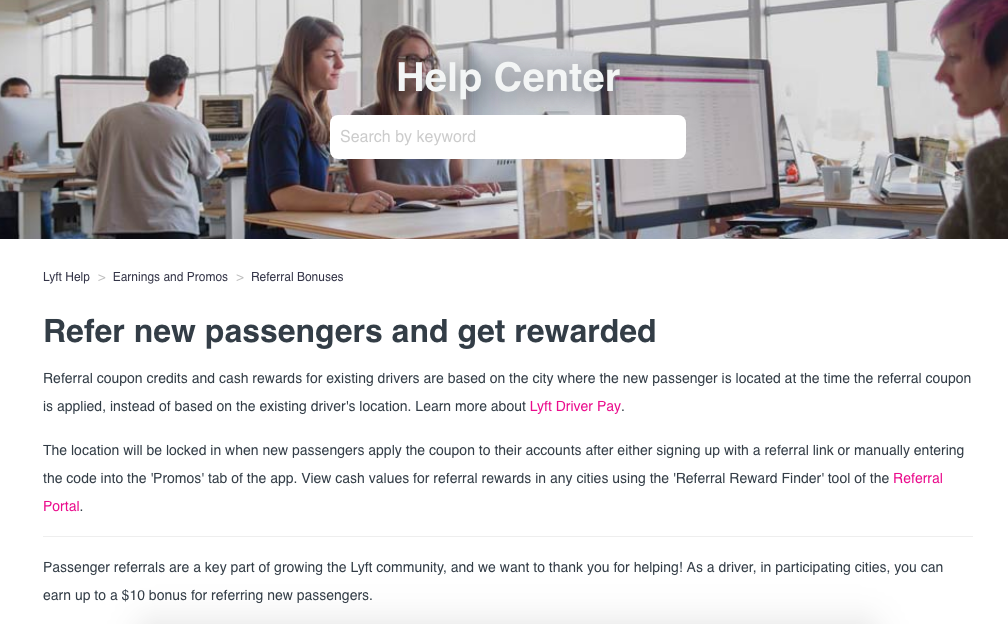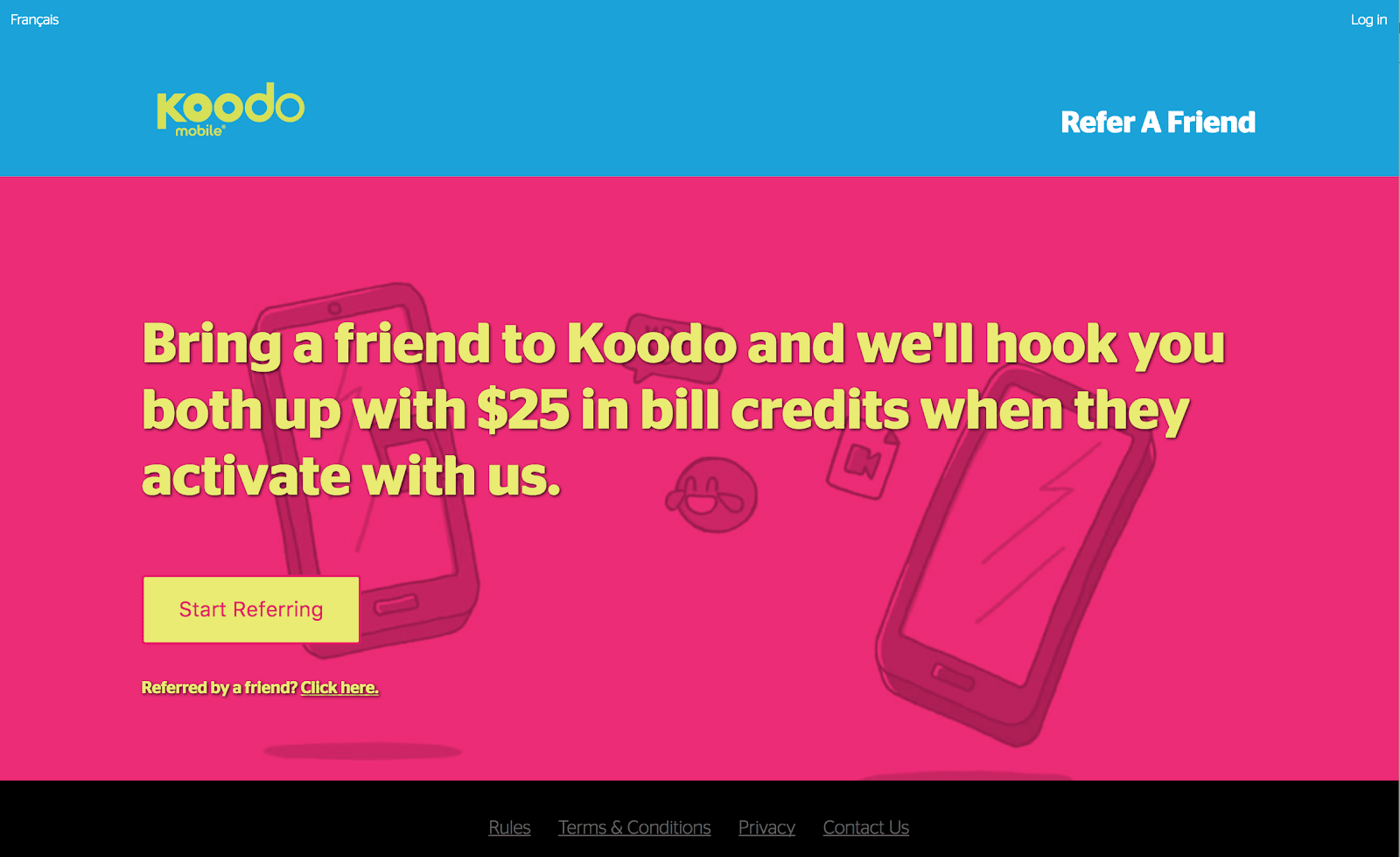Answers

Jun 17, 2019 - 10:03 AM

Image source: Pixabay.com
How Referral Programs Work
Referral programs work for much the same reason that online reviews work: because people trust the word of other people. The word-of-mouth referral has historically been (and continues to be) one of the top ways for companies to get new customers. A referral program just harnesses, organizes, and encourages that energy.
Referrals rely on the power of “social proof,” or the simple idea that people copy the behavior of others. We tend to assume that other people have knowledge about a situation that we don’t have, so we base our behavior on what they do. And we like to know something’s been tested by other people before we try it out ourselves.
It’s the reason people often buy from known, popular brands: they see everyone else buying or using the products, and assume that those people know what they’re doing. Referrals from celebrities and influencers can have a powerful effect, but referrals from people in our own circles can be just as strong, if not stronger.
With a referral program, you turn ordinary word-of-mouth referrals into win-win situations. The person doing the referring provides value to you by sharing their experience and advice with their peers. But you also provide value to this referrer by offering them an incentive in return. To boost things even more, you should offer an exclusive discount or perk to the new customer who gets referred, too.
And with referral marketing, customers won’t see you as a pushy brand that’s always trying to make a sale. You let your existing customers sell for you instead. Shoppers burned out on advertisements are often much more receptive to referrals. Some studies even suggest that referrals result in more reliable, loyal customers.
Cons of Referral Programs
Now that you know what makes referral programs effective, are there any possible drawbacks?
Not many, fortunately - but there are still a few things to be aware of. First, referral programs tend to be a slow way to get more customers, especially if you don’t have a large customer base to begin with. It can take a while to strike the right tone or offer that will incentive your current customers to make referrals. And if the program is too complicated, people won’t use it - it should be straightforward and simple.
Second, it’s sometimes difficult to track how effective your referral campaign is. However, using the right tools and platforms can help (more on those below).
Finally, people will occasionally abuse referral programs. For example, they might refer themselves at an alternate email address to reap double rewards. It’s important to have a way to catch these problems quickly.
What Makes a Referral Program Effective?
With that in mind, here are some ways to get the best results from a referral program.
Make Your Current Customers Happy
Obviously, referral programs will never work unless you already offer a great customer experience. Invest in keeping your current customers happy, so they’ll want to refer your brand.
Pick the Right Incentive
What incentive will realistically get customers to make referrals - and entice new ones to sign up? The answer may change depending on your brand. A discount for both referrer and referree is usually the right choice, but you may need to do some testing to discover how big the discount needs to be to get results. For some brands, $5 off is enough, for others it takes a 25% discount.

Encourage people to share their referrals in public online spaces, like their social media pages. You might send them a pre-made, branded referral message or graphic to share after a purchase, inviting new people to try your brand. This visibility grows referrals faster, and even those who don’t click the referral link are still getting exposed to your brand.
Fix Bugs Fast
A small issue, like a reward incentive that a customer never received, can harm your referral program fast. Double-check that everything’s working properly before you launch the program, and have a plan in place to fix issues quickly.
Time It Well
The timing of your referral message can also have an effect on how well it works. It’s usually best to wait until a customer has established a strong relationship with your brand before you ask. And if they don’t join the referral program, avoid asking again too soon - this can make them feel harassed and cut ties with your brand.

The right platform will allow you to track your referrals, so you know who your referrals are, who referred them, when they were referred, and what actions they took next. A customer relationship management system (CRM) is a great way to keep all that information organized (along with other details about your customers). A CRM also lets you automate everything about your referral program.
Commission Junction and HasOffers are actually geared more toward affiliate marketing, which is something different from a referral program (although there is some overlap). Here are a few solid platforms to try instead:
Agile: A CRM that syncs your marketing, social media, and more, including referrals, with reasonably-priced monthly plans.
HubSpot: Easy-to-use CRM dashboard for managing your customer pipeline, which costs absolutely nothing.
NextBee: Not actually a CRM, but designed to integrate with CRMs including Agile and HubSpot to streamline your referral program further - you can start with a demo before you commit.
It’s good to have a CRM anyway, so you can track your customers along every step of their journey. And with a good CRM, it’s easy to implement, track, and update your referral program, so you can reap the rewards of social proof.

Jun 17, 2019 - 05:41 PM
One of the most successful examples of a referral program was Dropbox's.
https://www.referralcandy.com/blog/dropbox-referral-program/

Image credit: referralcandy.com
They offered an additional 250MB of storage space for each referral a current user sent and the referred friend also got 250MB of additional free storage.
According to the article:
With referrals, Dropbox went from 100,000 to 4,000,000 users in 15 months. According to founder/CEO Drew Houston, referrals increased signups by SIXTY percent, PERMANENTLY. That’s a 40x increase, or a doubling of users every 3 months. In April 2010, Dropbox users sent 2.8 million direct referral invites! Just try to imagine putting that sort of high quality reach into monetary terms. It would look like… ten billion dollars? :p
The $10 billion dollars mentioned is the valuation Dropbox commanded when the company went public.
The request to refer was baked into the product, without being obnoxious. It is a tricky balance that can only be attained by testing and tweaking.
Much of their user growth in the early days came from this. And while their spectacular "growth engine" has been much studied, it has never been repeated!
Some studies show that when straight cash is the incentive, the referral program performs a lot worse!
People don't want to be perceived as cheap by their friends and are uncomfortable sharing links to get $10 off on a product. Often, if they think you have a great product they prefer to just recommend without getting anything in return.
The article does mention PayPal's program as an example where cash worked, perhaps because PayPal is a product for managing cash. I have yet to see another case where straight cash worked as well.
Two other referral success case studies that come mind are Groupon and LivingSocial. Note that both of these were "group buying" programs, meaning that for each daily deal the cost would continue to fall with the number of people who signed up--at least this was the case initially.
So people had an incentive to refer lots of friends using "togetherness" as in "let's all go to this restaurant on such and such a date and get the 50% discount" or "let's all try this fun-looking sky jumping deal for 70% off".
Unfortunately this was not sustainable as the local businesses offering the deals incurred losses to get people in the door but few of these people became repeat customers. LivingSocial is defunct and Groupon is a pale shadow of its former self, nowhere near the $25 billion valuation it once commanded!






Add New Comment